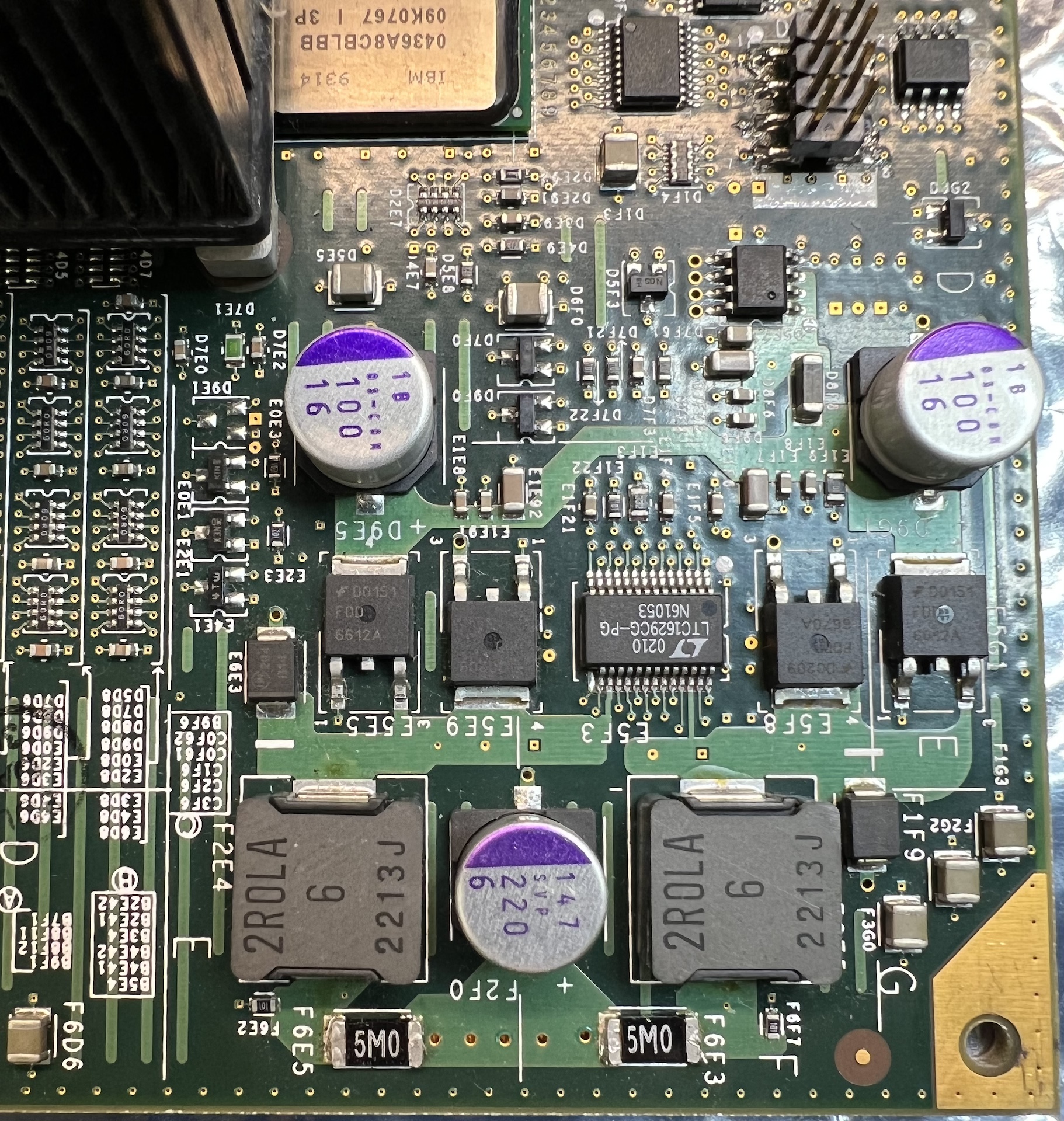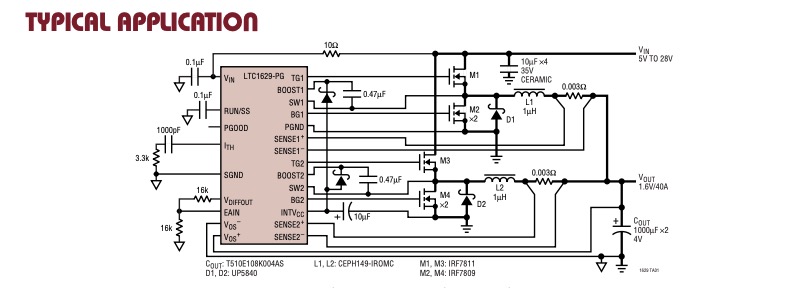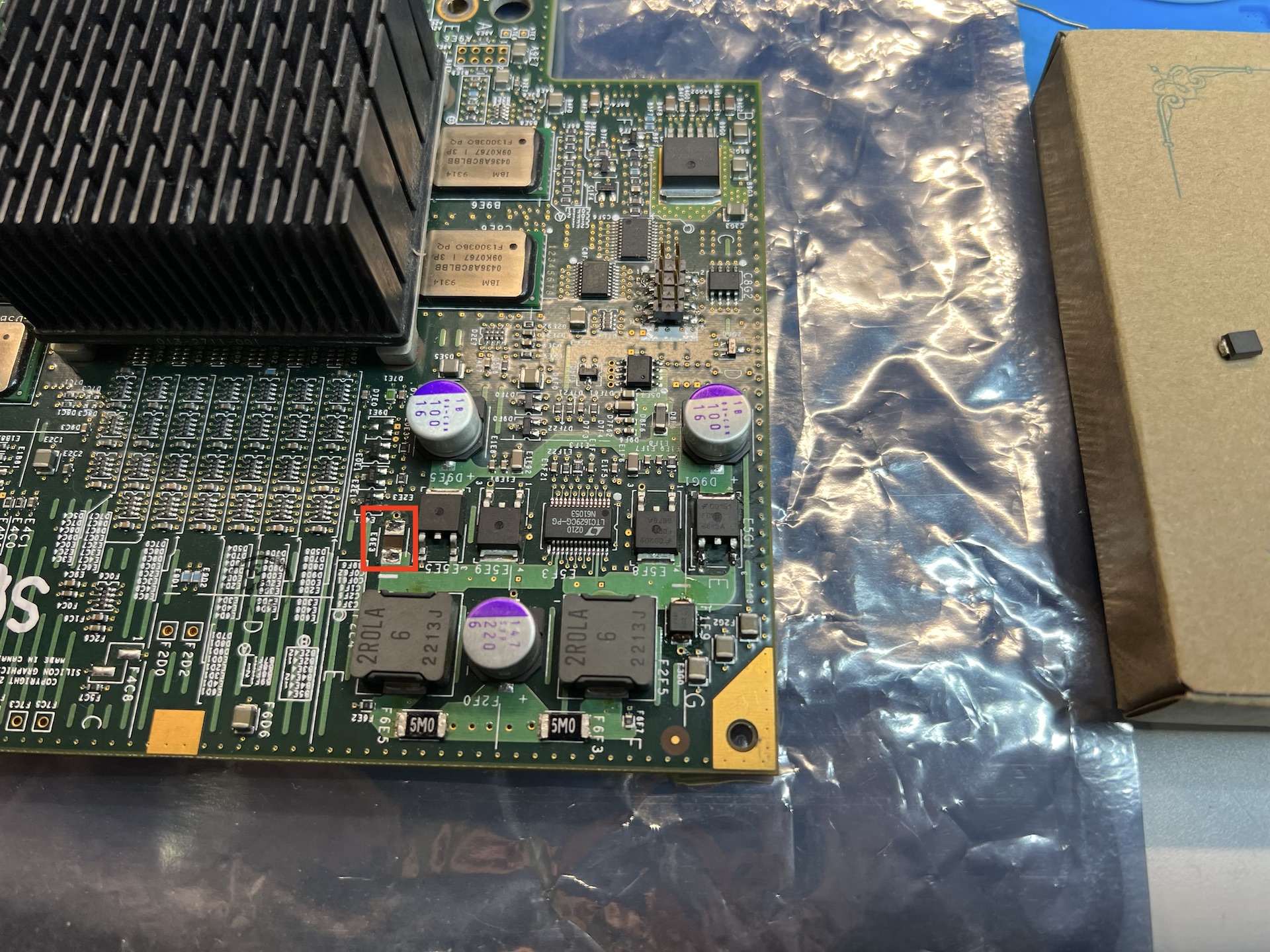Okay, I got to work on this more today. I'm uncertain I've found THE ISSUE, hopefully I have. I need to place an order soon for these parts anyway so I'll be doing that.
Okay, as I said before, this PIMM causes HIGH voltage on the PIMM 5V line = ~6.28v for me, which causes env shutdown. It also showed a number of cache errors...I'm uncertain if it's directly related. I probed around and thought there was a short between source and drain on a MSOFET rail and several decoupling caps...but had a very hard time proving it.
I used a current tracer from a ToneOhm 700...it kept pointing to a short on one of the sense resistors (F6F3) in the VRM region.

I used desoldering tweezers to remove them and retest the region...then it didn't really come up again. I tested the sense resistors..they seem fine...so I put them back. I then removed a MOSFET (E5G1) that claimed its drain and source were shorted in diode-mode testing (but 25 Ohms in ohm mode), It tested fine in my huntron outside the circuit, so I put that back too.
Not to be doo discouraged I re-examined the suggested application notes for these series of low-dropout regulators:

I originally thought that it may be the sense lines...as my huntron claimed the one of them (only for sense1+ I think) was shorted on the other side of a sense resistor. But that wasn't really the case either...okay...lots of poor steps here and I was getting pretty demoralized. The 220uF caps are registering WAY out of spec in circuit (using 300mV stimulus @ 1V, 30Hz) as something like 550uF-604uF (but that could be a connection issue in the in-circuit testing). I'm going to have to test them out of circuit but even with tweezers, SMD caps don't really survive tweezers removal unhurt so I'll plan on just replacing all SMD electrolytic caps anyway. But the huntron not only showed that the output cap (F2F0) was very HIGH ESR it also leaked...the other 220uF cap also leaked (leaking current, not leaking physical electrolyte!) but not as bad. I'm not 100% sure so only replacement will prove that (by comparison).
So I examined the circuit and saw that there are two diodes (schottky), these should be D1 and D2 on the usage diagram, they sit around the coils and the source on each MOSFET side and connect to the drains. I thought, well if one of those were shorted that would possibly show as a diode-mode short from source to drain (unless a capacitor is in the way of my readings...which happens ALL THE TIME).
So I gently plucked the diodes (one at a time) from the board. They are ONSEMI B14, and one of them (E6E3) was SHORTED (could only tell outside of circuit).

The bad thing is, even when you leave it out and place ONLY the good one back into position...you still hit the output cap during measurement so I never can tell it's shorted. So once again, you have to remove components to even know but I knew there was some kind of short because I did try limited voltage injection 800mv @ 1A at the source/drain of the MOSFETs and it took, hard. So I'm fairly sure I'm on the right track.
Now, reading the documentation for the chip it claims the function of these diodes (D1 & D2) is to ensure the gate clamps correctly and are not left on or signalled on via transients! So I guess back EMF suppression? So without this diode the paired MOSFET(s) would be ON more to nearly/maybe all the time. However this would also clamp the voltage rail so I'm unsure why that would lead to an increase in PIMM 5V rail voltage...unless that's a symptom of being overdriven (overdrawn)?
Also, as I mentioned, the C-out Capacitor (220uF) is gone HIGH ESR, that very much affects the regulation of these circuits.
So, while not conclusive (there could be more bad things here...plus REAL damage given the CACHE errors) it is real damage, found.
At this stage I'm going to place an order for the SMD electrolytic caps, a couple new barrier diodes, and install them and see what happens. I know my mainboard survives with this installed as-is so it should be okay with these changes.
Anyway, comments welcome...any additional eyes or thoughts on test/replacements.








 NEED ->
NEED -> 



![[Image: collection.png]](https://jurassic.nl/images/collection.png)




